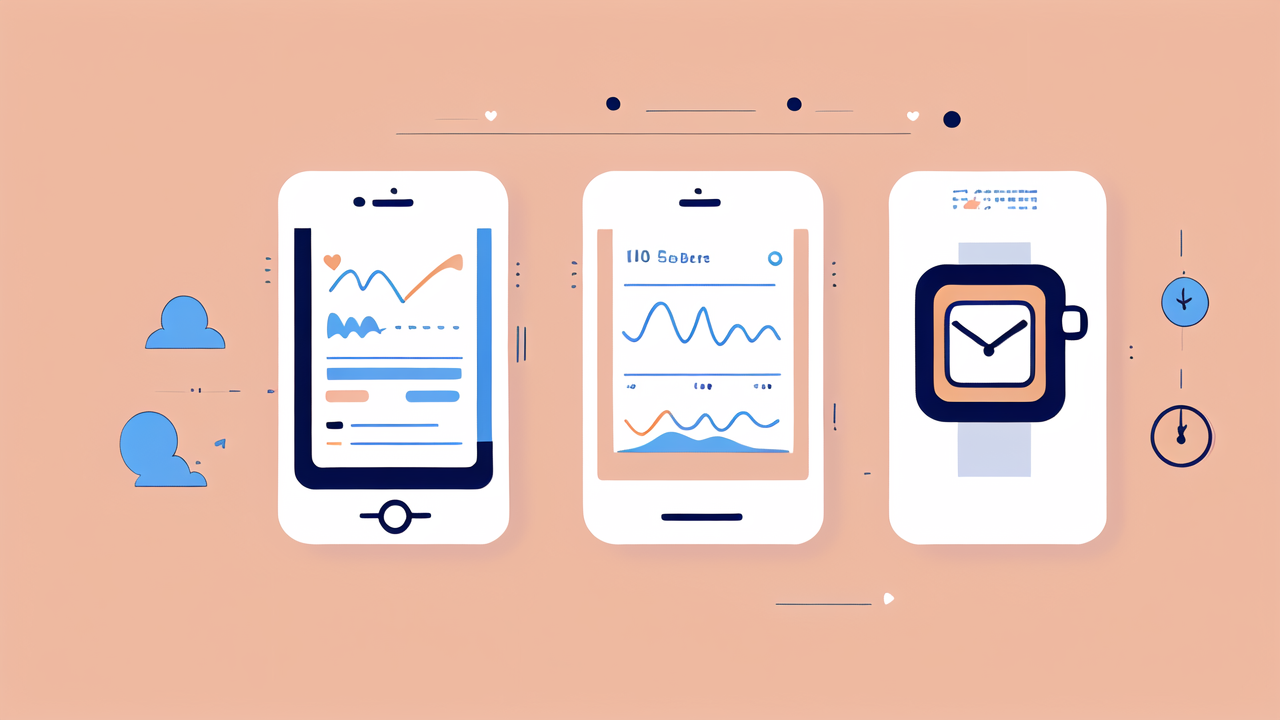Understanding the Role of Smartwatches in Health and Fitness
The Evolution of Smartwatch Technology
Smartwatches have come a long way since their inception. They started as simple devices that could tell time and show notifications. Now, they're powerful health and fitness tools. Early models could count steps and track basic activities. Today's smartwatches offer advanced features like heart rate monitoring and GPS tracking. They can even measure blood oxygen levels and detect falls. This evolution has made smartwatches essential for fitness enthusiasts and health-conscious individuals alike.

Key Features of Top Fitness Smartwatches
Top fitness smartwatches boast a range of features to help users achieve their health goals. These include:
- Accurate heart rate monitoring
- GPS tracking for outdoor activities
- Water resistance for swimming workouts
- Sleep tracking and analysis
- Stress level monitoring
- Activity recognition for various exercises
- Long battery life for extended use
- Customizable watch faces and bands
These features work together to provide a comprehensive view of your health and fitness.
How Smartwatches Can Enhance Daily Exercise Routines
Smartwatches are powerful tools for improving your daily exercise routines. They provide real-time data during workouts, helping you stay in target heart rate zones. Many can suggest recovery times and track your progress over weeks and months. Some even offer guided workouts right on your wrist. By wearing a smartwatch, you're more likely to stay motivated and accountable. You can set daily goals and receive reminders to move throughout the day. This constant feedback can lead to better habits and improved fitness outcomes.
Leveraging Smartwatch Measurements for Weight Management
Tracking Your Body Weight and BMI
Modern smartwatches can help you track your weight and BMI over time. Some models sync with smart scales to automatically record your weight. Others allow you to manually input this data. By tracking these metrics, you can see how your efforts are paying off. Many smartwatches calculate your BMI based on your height and weight. This gives you a clearer picture of your overall health. Regular tracking can help you stay motivated and make adjustments to your diet and exercise plan as needed.

Smartwatch Integrations with Popular Diet and Fitness Apps
Smartwatches often integrate with popular diet and fitness apps. This integration creates a seamless experience for managing your health. For example, your watch might sync with MyFitnessPal to track calories burned. Or it could work with Strava to log your runs and bike rides. Some popular integrations include:
- MyFitnessPal for calorie tracking
- Strava for running and cycling
- Fitbit for overall activity monitoring
- Apple Health for iOS users
- Google Fit for Android users
These integrations make it easier to see the big picture of your health and fitness journey.
Tips for Accurately Monitoring Your Progress
To get the most out of your smartwatch for weight management, follow these tips:
- Wear your watch consistently for accurate data.
- Update your personal information regularly for precise calculations.
- Sync your watch with other devices like smart scales.
- Use the same measuring conditions each time (e.g., weigh yourself at the same time daily).
- Don't obsess over daily fluctuations; look for trends over time.
- Combine watch data with other metrics like body measurements and progress photos.
- Regularly review your data to adjust your fitness and nutrition plans.
By following these tips, you'll get a more accurate picture of your progress over time.
Advanced Metrics: Smartwatch Features Beyond Basic Tracking
Maximizing Your Workout Efficiency with Heart Rate and VO2 Maximization
Advanced smartwatches offer features to help maximize your workout efficiency. Heart rate monitoring is key to ensuring you're exercising at the right intensity. Many watches now provide real-time heart rate zones during workouts. This helps you stay in the optimal range for your fitness goals. Some high-end models even estimate your VO2 max. This metric measures how efficiently your body uses oxygen during exercise. By tracking these advanced metrics, you can fine-tune your workouts for better results.

Analyzing Your Sleep Quality and Stress Levels
Sleep quality and stress levels play crucial roles in overall health and fitness. Many smartwatches now offer detailed sleep analysis. They track your sleep stages, duration, and consistency. Some can even detect sleep apnea symptoms. For stress management, watches often use heart rate variability (HRV) measurements. These can indicate when you're experiencing high stress levels. By monitoring these factors, you can make lifestyle changes to improve your overall well-being and fitness performance.
The Importance of Wearable Comfort and Battery Life in Long-Term Wellness
For long-term health tracking, comfort and battery life are crucial. A comfortable smartwatch is more likely to be worn consistently. This leads to more accurate and comprehensive data. Look for watches with adjustable bands and lightweight designs. Battery life is equally important. Longer battery life means less charging and more continuous tracking. Some watches offer power-saving modes for extended use. When choosing a smartwatch, consider these factors to ensure you'll use it consistently for the best results in your fitness journey.




Leave a comment
This site is protected by hCaptcha and the hCaptcha Privacy Policy and Terms of Service apply.